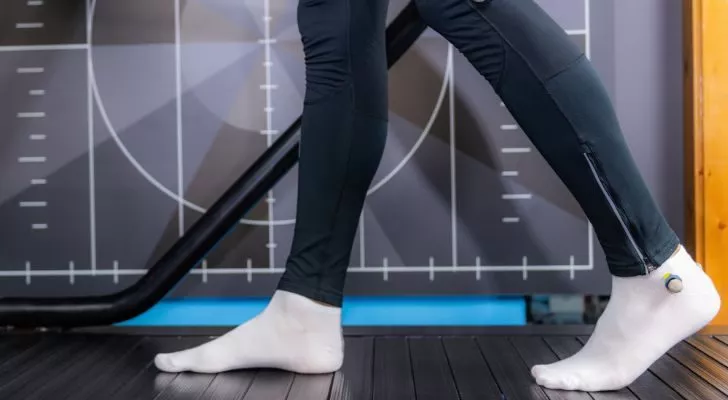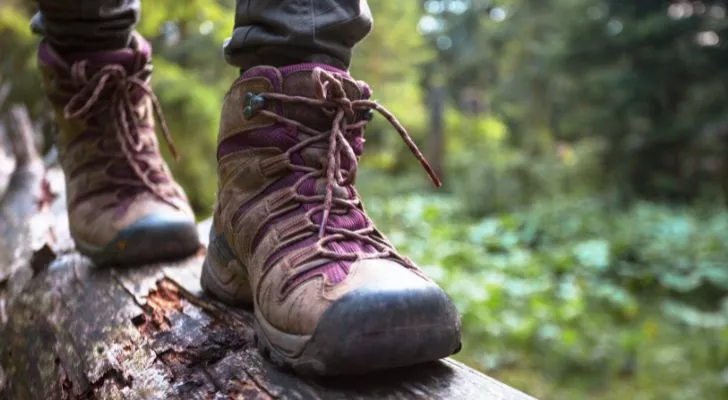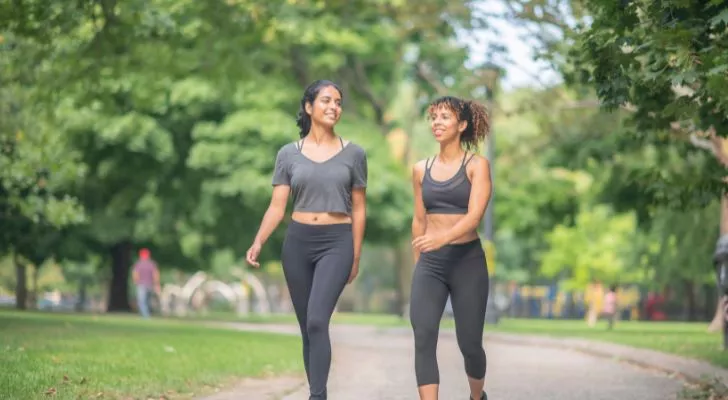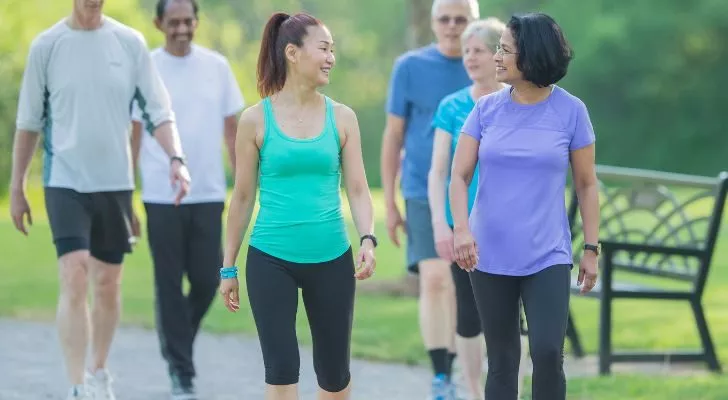Ever wondered about the mysteries behind something as ordinary as walking?
From the curious sway of our arms to the peculiar phenomenon of sleepwalking, there’s a whole world of intrigue beneath our daily strides.
With that said, let’s step into the unexpected and explore the wonders that lie within our daily stroll!
Around 4,000 steps are enough to reap the health benefits of walking.

Despite doctors recommending people take 6,000 to 10,000 steps daily, research shows that you can still be healthy even if you just take 2,500 to 4,000 steps per day.
This doesn’t mean you should settle for less, though, as increasing your daily steps leads to more health benefits.
Besides improving heart health and increasing life expectancy, walking more can reduce your chances of high blood pressure, diabetes, and even cancer!
Some well-known entrepreneurs have adopted walking meetings.

The first thing that might come to your mind when you hear the word “meeting” is a group of people sitting around a conference table.
But times are changing, and some successful businessmen, like Steve Branson and the late Steve Jobs, have done their meetings on foot.
An obvious benefit is that it allows you to work and exercise simultaneously.
But another advantage is that walking boosts creativity, which is a pretty big deal since brainstorming is an important factor in meetings.
Sleepwalking is more common in children than adults.

Also known as somnambulism, sleepwalking is a sleep disorder that can be passed on genetically or triggered by certain medications.
Experts say it often happens during our childhood years but eventually stops as we grow into adults.
This explains why 5-15% of children experience sleepwalking annually, while only 1-1.5% of adults do.
Your walking pattern is as unique as your fingerprint!

A person’s manner of walking, also known as their gait, varies due to things like weight, posture, and speed.
However, injuries can also affect your gait, giving you what’s referred to as an abnormal gait. Some examples are antalgic gait and waddling gait.
An antalgic gait causes people to limp while walking, while a waddling gait makes someone walk like a duck due to weakness or dislocation of the hips.
The world record for the fastest time to walk the Pan-American Highway is 2,426 days.

British adventurer George Meegan started his journey in Ushuaia, the southernmost point of Argentina, and finished it in Prudhoe Bay, the northernmost place in Alaska.
Meegan’s grueling 19,019-mile (30,608 km) trek began on January 26, 1977, and finished over six years later on September 18, 1983.
Some insects can walk on water.

These mesmerizing insects belong to the Gerridae family and are commonly referred to as water striders or pond skaters.
Most gerrids are found in freshwater, but a genus called Halobates is an exception since they can be found in saltwater.
How they’re able to walk on water boils down to their long and thin legs, which are hydrophobic, thereby repelling water and creating a buoyant effect.
You use less energy if you swing your arms while walking.

It’s a natural thing for us to sway our arms when walking, as it simply seems more comfortable. But besides this, it turns out that this mannerism helps us conserve energy.
Researchers at universities in the U.S. and Netherlands discovered that people use 12% more energy when they don’t swing their arms while walking.
What’s more interesting, though, is that they found out that when we sway our arms in sync with our legs, we also use more energy – 26% more, to be specific!
National Walking Day is celebrated on the first Wednesday of April.

The American Heart Association (AHA) created National Walking Day in 2007 to promote the many health benefits of walking.
Other than the aforementioned benefits, walking also makes your joints more flexible and strengthens your muscles.
So, how about you use this day to wander around a park, go for a hike, or take your pet for a walk?
Singapore has the fastest walkers in the world.

Countries with fast-paced societies simply don’t have the time of day to stroll along at a leisurely pace.
Some examples of these busy countries are Denmark, China, and Spain. However, research from the Pace of Life Project in 2007 found that Singapore stands out the most.
The study measured the time it took to walk a distance of 62 feet (19 meters) in 35 cities and found that Singaporeans were fastest at 10.55 seconds!
Walking can improve academic performance.

Simply put, exercise makes your brain perform better by increasing the blood flow to your brain.
This is why walking, an aerobic exercise, before studying or during study breaks can benefit learning and memory.
Speaking of aerobic exercise, research from Canada’s University of British Columbia has shown that regularly doing aerobic exercises increases the size of the hippocampus, a part of the brain that’s crucial for learning.
Walking is an Olympic sport.

That sport is called race walking, and it has been an Olympic sport since 1904.
At the outset, though, race walking was just part of combined events like decathlons. It was only considered a standalone sport four years later at the 1908 games in London.
Regarding its rules, they’re pretty simple: One foot should always be on the ground, and the supporting leg should extend and stay straight from the moment it makes contact with the ground until the body moves directly over it.
Those who fail to follow the rules are given a penalty. Race walkers are then disqualified from the competition once they receive three penalties.
Walking is great for your mental health.

There’s a reason why some people often go out for a walk after a long, tiring day. It’s because not only does it reduce stress levels, but it also improves our mood and cognition!
Another way that walking is beneficial for our mental health is due to its ability to promote self-reflection, helping you gain more gratitude and control of yourself.
That’s why if you’re thinking about walking more, then this is your sign!
Walking can also be a form of meditation.

This type of meditation is practiced in Kinhin, Theravada, and Vipassana, which are all forms of Buddhism.
It’s done at a slow pace while focusing on your surroundings and body movements, like when your foot touches the ground or when your arms sway.
You can use walking meditation as an alternative way of being mindful if you find it challenging to meditate in traditional ways.
Walking slowly is associated with confidence.

You walk slowly when your strides are wider. And according to psychologists, you take up more space when you walk with larger steps, implying not only confidence but also authority.
On the other hand, walking faster doesn’t exude confidence because it makes you appear more anxious.
But confidently walking isn’t just about your strides and pace. There are other factors to consider, such as looking forward, keeping your hands out of your pockets, and not slouching.
Hindus have a festival wherein they walk on fire.

Thimithi festival is a firewalking ceremony that originated in Tamil Nadu in southern India and is now celebrated in different countries with Tamil people, like Malaysia, Singapore, and South Africa.
It’s celebrated during October and November and is dedicated to the Hindu goddess Draupati Amman.
Celebrants of Thimithi perform a ritual of walking across hot coals, which they believe to be a way of proving their faith.
Walking is great for your body and mind. That’s why there’s a special holiday that promotes this easy exercise, which provides plenty of health benefits.
But walking isn’t just about being healthy. Some do it for their studies, religion, and even for the Olympics.
It’s a simple activity that impacts different aspects of our lives. So, let this be a reminder for us to walk more and sit less!


















